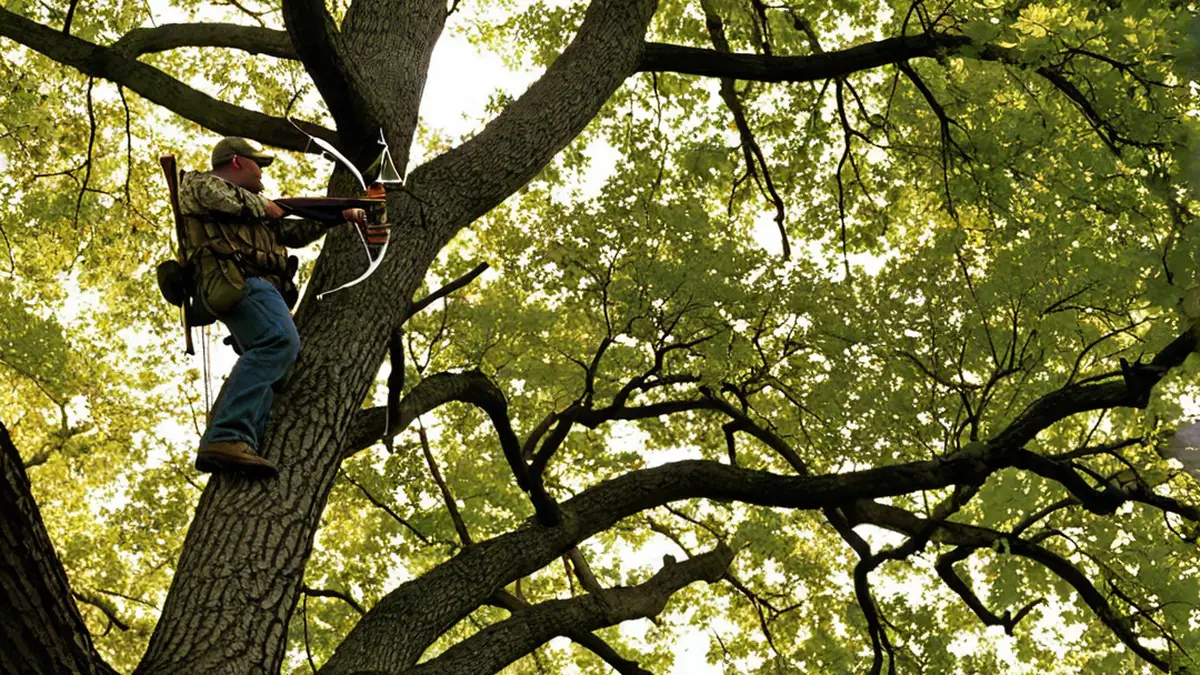Bow hunting from a tree stand adds a whole new level of excitement and challenge to the hunting experience. As an avid bow hunter myself, I can attest to the thrill of perching above the ground, concealed in the branches, waiting for the perfect shot. One of the key factors for a successful bow hunt from a tree stand is knowing where to aim. In this article, I will share my personal insights and provide detailed information on where to aim when bow hunting from a tree stand.
The Importance of Shot Placement
Shot placement is crucial when bow hunting from a tree stand. Unlike rifle hunting, where the trajectory and speed of the bullet compensate for minor errors in aiming, bow hunting requires precise accuracy. A well-placed shot ensures a quick and humane kill, while a poorly placed shot might result in a wounded animal and a difficult tracking job.
Understanding the Anatomy of Game Animals
Before we delve into where to aim from a tree stand, it’s essential to have a good understanding of the anatomy of the game animals you are pursuing. Each animal has vital organs that, when hit, will result in a quick and ethical kill.
For deer, the heart and lungs are the primary targets. The heart is located just behind the animal’s shoulder, while the lungs extend further back and slightly downward. Aiming for the heart-lung area increases your chances of hitting vital organs and causing rapid blood loss.
For larger game animals like elk or moose, the vitals are located slightly lower and forward of the deer. The heart is still behind the shoulder, but it sits lower, closer to the elbow joint. The lungs are deeper and extend further down towards the bottom of the chest cavity.
Shot Placement when Bow Hunting from a Tree Stand
When hunting from a tree stand, your shooting angle will be downward. This angle affects shot placement and requires adjustments to ensure proper targeting. Here are some guidelines:
- Target the heart-lung area: The heart-lung area remains the primary target when aiming from a tree stand. However, it’s important to compensate for the downward angle. Aim slightly higher than you would if shooting from the ground. This compensates for the arrow’s trajectory and ensures it enters in the middle of the vital area.
- Avoid low shots: Shooting too low can result in hitting the brisket or the stomach, both of which offer less lethal shots. These shots are generally avoided as they can lead to a slow death and a difficult tracking job. Aim for the middle of the vitals to ensure a clean kill.
- Consider quartering shots: When an animal presents a quartering shot angle, aim for the opposite shoulder. This shot placement ensures that the arrow penetrates through the vitals, reaching the heart and lungs. Quartering shots can be challenging but are often necessary when hunting from a tree stand.
Conclusion
Bow hunting from a tree stand requires careful consideration of shot placement. Aiming for the heart-lung area, compensating for the downward angle, and avoiding low shots are keys to success. As always, ethical hunting practices are paramount, and taking a well-placed shot ensures a humane and quick kill. So, next time you settle into your tree stand, remember these tips and stay patient. Happy hunting!
